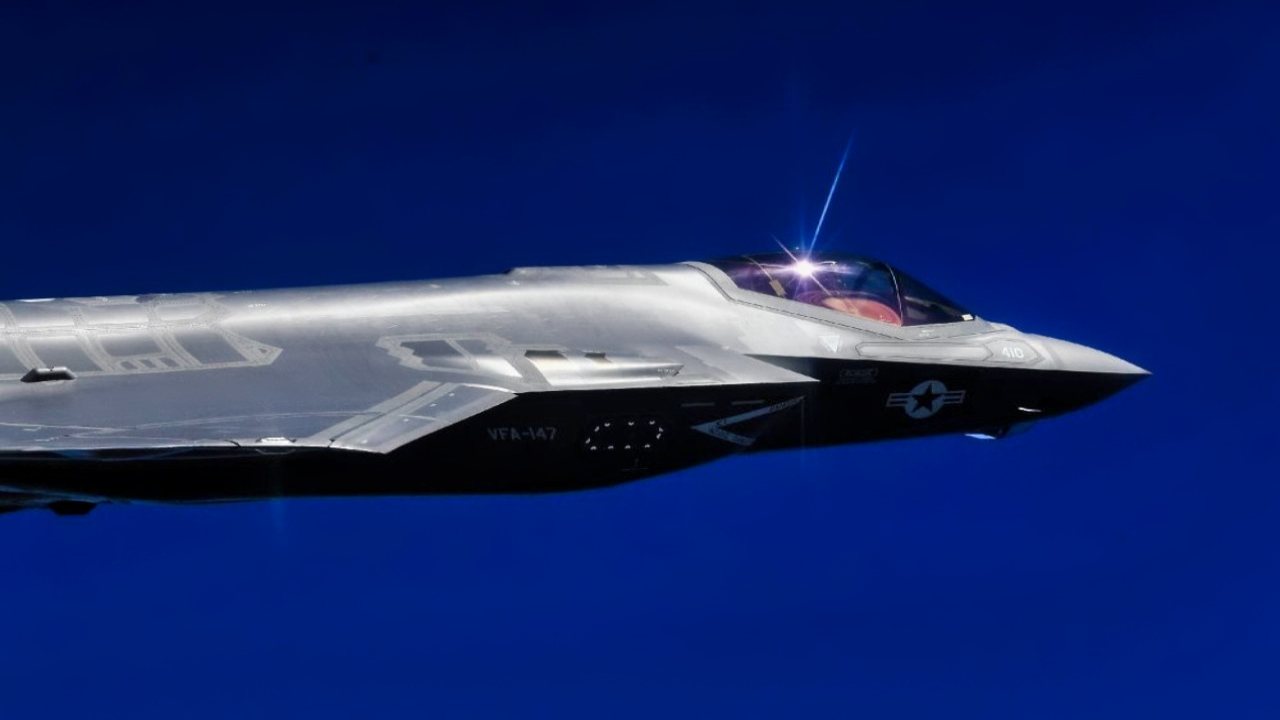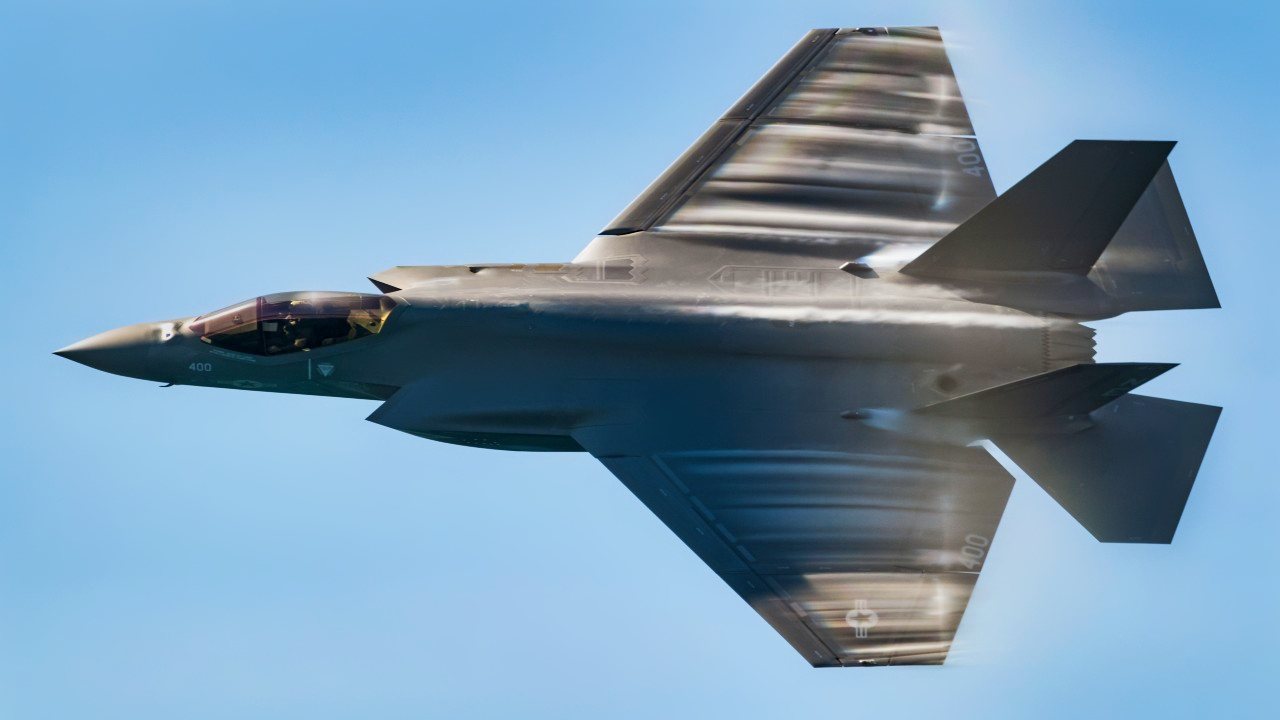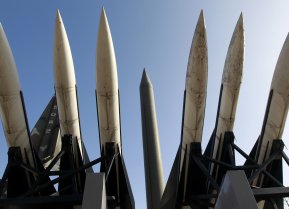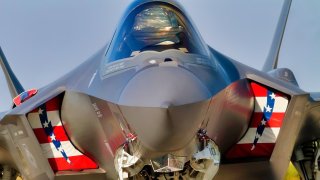The U.S. Marine Corps Now Has F-35 Fighter 'Tomcats'
The U.S. Marine Corps’ VMFA-311 “Tomcats” squadron has achieved initial operational capability with the F-35C Lightning II, marking a significant milestone in readiness for carrier-based operations.
Summary and Key Points: The U.S. Marine Corps’ VMFA-311 “Tomcats” squadron has achieved initial operational capability with the F-35C Lightning II, marking a significant milestone in readiness for carrier-based operations.

-This achievement means the squadron is fully equipped and trained to deploy in combat if needed. The F-35C’s advanced capabilities make it a critical asset for air superiority, close air support, and intelligence missions.
-The Marine Corps has a total order of 420 F-35s, including 67 F-35Cs, emphasizing the importance of these aircraft in future operations.
The F-35C Is Now All About the Tomcats
The U.S. Marine Corps tactical aviation community achieved an important milestone this week after its second fighter jet squadron achieved initial operational capability with the F-35C Lightning II stealth fighter jet.
Designed for aircraft carrier operations, the newest F-35C squadron is now combat-ready in the event of a contingency.
The “Tomcats” Are Ready
Last week, Marine Fighter Attack Squadron (VMFA) 311 “Tomcats” declared initial operational capability and is ready to fly the F-35C to war if necessary.
“I am incredibly proud of the Marines and Sailors in this squadron as they hit this critical milestone that ensures greater lethality and operational readiness for the Wing, the Marine Corps, and the joint force,” U.S. Marine Corps major general James Wellons, the commanding general of 3rd MAW, said in a press release.
Achieving initial operational capability is a big milestone and signifies that the unit has the aircraft, the right equipment, and the necessary trained pilots and maintainers.
“Initial operational capability is a milestone and achievement in readiness. It’s all on the backs of the Marines out there. What they do in their day-to-day actions is what made this possible,” Marine Corps Lieutenant Colonel Michael Fisher, the commanding officer of VMFA-311, stated.
Previously, the squadron flew the AV-88 Harrier and F/A-18 Hornet fighter jets.
“Nothing changes for us, our pursuit of excellence and how we carry ourselves, initial operational capability is a byproduct of daily competency and being good at our job,” Fisher added. “It is a great accomplishment, but when we wake up the next day, we are going to keep doing the same thing. Now full operational capability is the goal.”
F-35C activity is picking up. Only a few days ago, the Navy announced the forward deployment of an F-35C squadron in Japan to be close to China, Russia, and North Korea. And now, the Marine Corps announced the second operational F-35C squadron.
“The Tomcats have a storied history that includes legends such as Ted Williams and John Glenn, and participation in every major conflict since World War II. Today’s Marines add another chapter to that legacy with the introduction of the F-35C and fifth-generation capabilities to VMFA-311,” Wellons added.

The Marine Corps has ordered a total of 420 F-35 Lightning II stealth fighter jets. Broken down, the order is for about 353 F-35B aircraft, which rely on a Short Take-Off, Vertical Landing (STOVL) mechanism to take off and land, and sixty-seven F-35Cs. The Marine Corps is the biggest customer of the F-35B (the United Kingdom has ordered 138 F-35Bs, Japan forty-two F-35Bs, Italy thirty F-35Bs, and Singapore twelve F-35Bs). It is also one of the only two customers for the F-35C, with the U.S. Navy being the other and biggest one with an order for 273 F-35Cs.
A fifth-generation, multirole fighter jet, the F-35 Lightning II can conduct six mission sets: Air Superiority, Close Air Support, Strategic Attack, Electronic Warfare, Intelligence, Surveillance, and Reconnaissance (ISR), Suppression of Enemy Air Defenses (SEAD), and Destruction Enemy Air Defense (DEAD). The aircraft comes in three versions: the F-35A, the conventional take-off and landing version; the F-35B, which is a STOVL aircraft; and the F-35C, which is designed for carrier operations.
About the Author:
Stavros Atlamazoglou is a seasoned defense journalist specializing in special operations and a Hellenic Army veteran (national service with the 575th Marine Battalion and Army HQ). He holds a BA from Johns Hopkins University and an MA from Johns Hopkins’ School of Advanced International Studies (SAIS). His work has been featured in Business Insider, Sandboxx, and SOFREP.
All images are Creative Commons.


